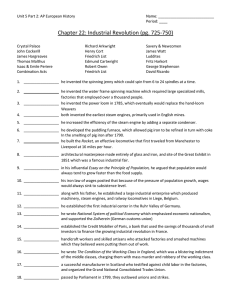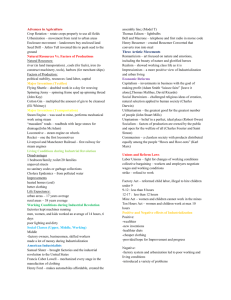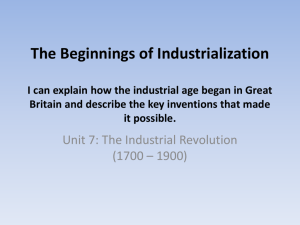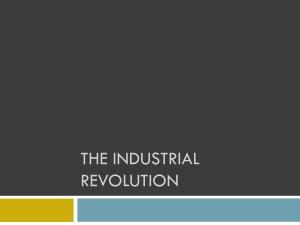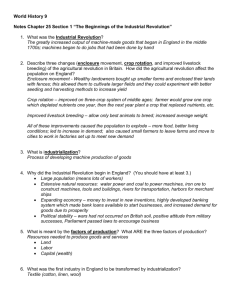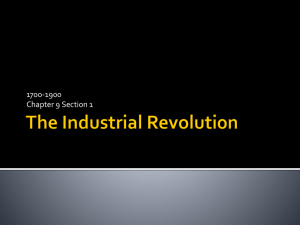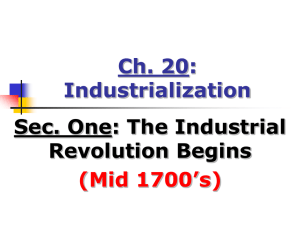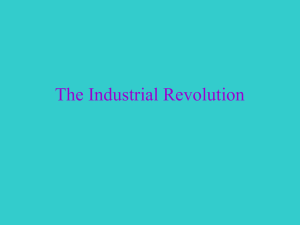Name: Mods: Textile Industry: the First Example of Industrialization
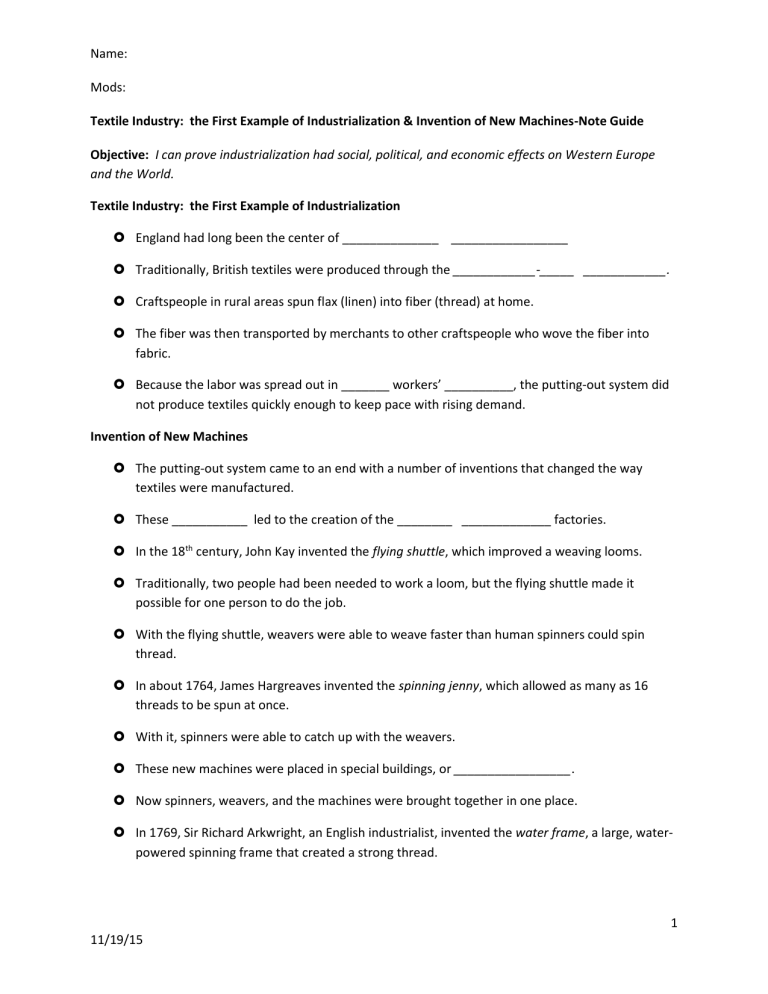
Name:
Mods:
Textile Industry: the First Example of Industrialization & Invention of New Machines-Note Guide
Objective: I can prove industrialization had social, political, and economic effects on Western Europe
and the World.
Textile Industry: the First Example of Industrialization
England had long been the center of ______________ _________________
Traditionally, British textiles were produced through the ____________-_____ ____________.
Craftspeople in rural areas spun flax (linen) into fiber (thread) at home.
The fiber was then transported by merchants to other craftspeople who wove the fiber into fabric.
Because the labor was spread out in _______ workers’ __________, the putting-out system did not produce textiles quickly enough to keep pace with rising demand.
Invention of New Machines
The putting-out system came to an end with a number of inventions that changed the way textiles were manufactured.
These ___________ led to the creation of the ________ _____________ factories.
In the 18 th century, John Kay invented the flying shuttle, which improved a weaving looms.
Traditionally, two people had been needed to work a loom, but the flying shuttle made it possible for one person to do the job.
With the flying shuttle, weavers were able to weave faster than human spinners could spin thread.
In about 1764, James Hargreaves invented the spinning jenny, which allowed as many as 16 threads to be spun at once.
With it, spinners were able to catch up with the weavers.
These new machines were placed in special buildings, or _________________.
Now spinners, weavers, and the machines were brought together in one place.
In 1769, Sir Richard Arkwright, an English industrialist, invented the water frame, a large, waterpowered spinning frame that created a strong thread.
1
11/19/15
Name:
Mods:
Textile Industry: the First Example of Industrialization & Invention of New Machines-Note Guide
The spinning mule, invented in 1779 by Samuel Crompton, was a combination of the spinning jenny and the water frame.
The spinning mule made strong, fine fiber.
The Scotsman James Watt’s ___________________ of the coal-powered ____________ engine in 1782 contributed to the growth of the textile industry.
So did Edmund Cartwright’s power loom (1785), which was run by steam power.
Effects of Steam Power
Rushing streams and rivers turned the huge wheels that had provided power used by the
___________ factories.
With the ____________-_______________water loom, _____________ factories could be built
_______________, not just near sources of water.
The steam engine also contributed to the ____________of steam-powered ________________ in the early 19 th century, which allowed _______________ to _________________ goods cheaply _________ distances over land.
England’s __________ industry _________ as the use of the __________ engine __________.
__________ workers were needed to _________ coal and to run __________ powered
________________ in factories and steam ____________ in ___________ and ___________.
2
11/19/15

